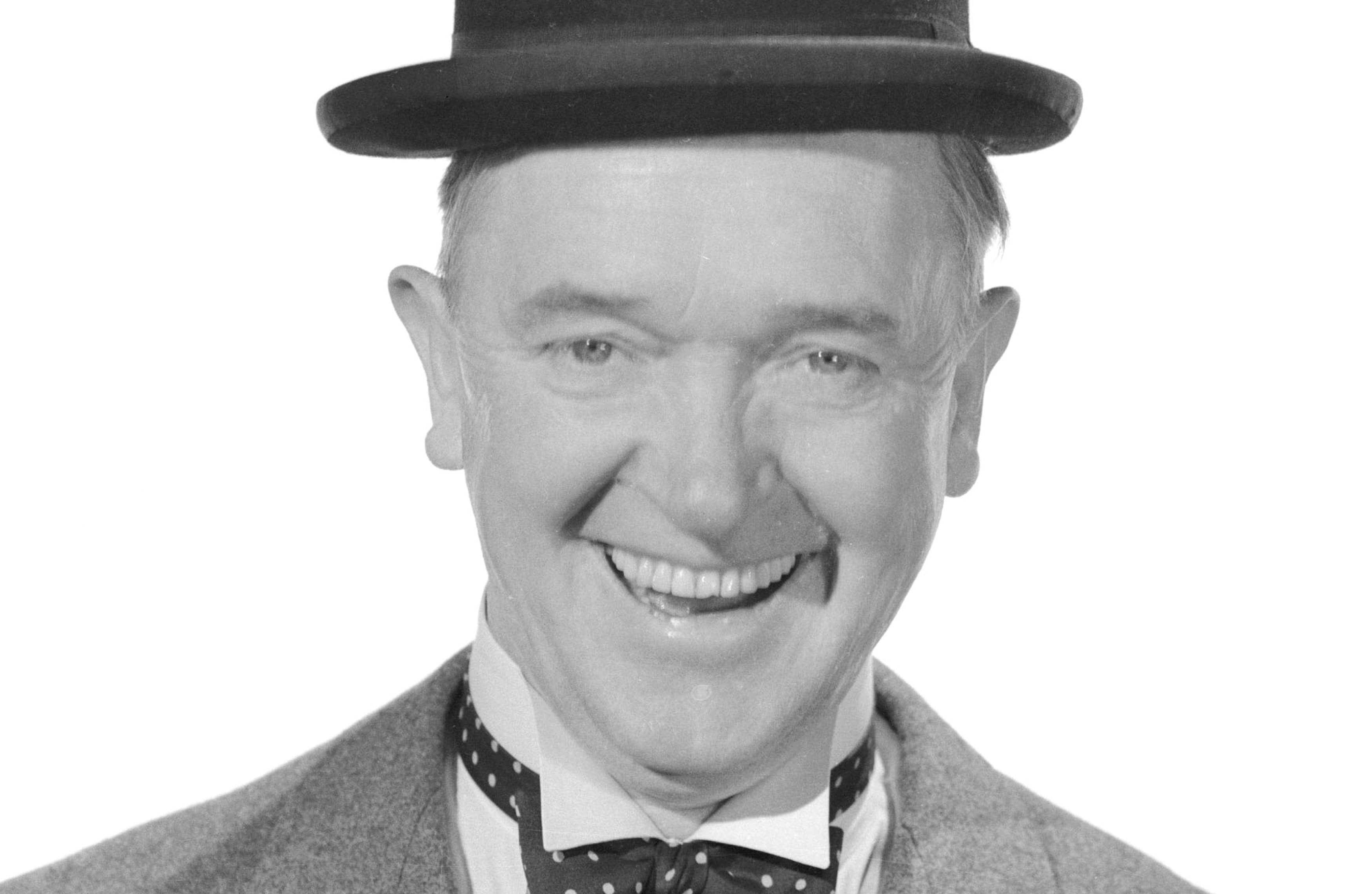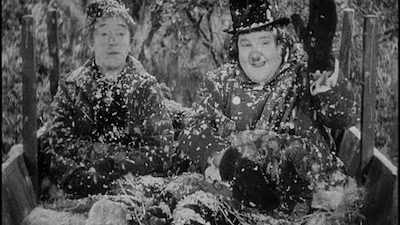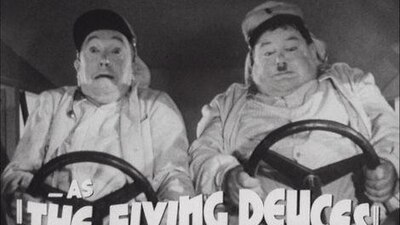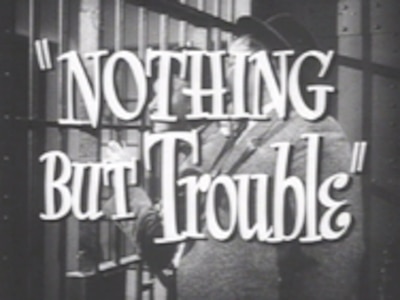Stan Laurel

About
Biography
Filmography
Family & Companions
Bibliography
Notes
According to Leo McCarey, one of the creative forces (along with Fred Roach) behind the Laurel and Hardy team: "[Laurel] was one of the rare comics intelligent enough to invent his own gags. Laurel was remarkably talented, while Hardy wasn't. This is the key to the Larel-Hardy association. Throughout their lives [I was one of their intimates], Laurel insisted on earning twice as much money as Hardy. He said he was twice as good and twice as important, that he wrote the film and participated in its creation, while Hardy was really incapable of creating anything at all--it was astonishing that he could even find his way to the studio." --From "A Biographical Dictionary of Film" by David Thompson (New York: Alfred A Knopf, 1994)
"Forget Chaplin. Stan was the greatest." --Buster Keaton, reportedly overheard at Laurel's funeral
Biography
With his prominently pointed chin, bowler hat, and unwavering childlike grin, comedy legend Stan Laurel became one of the most iconic faces in the history of film as one-half of the acting team Laurel and Hardy. Getting his start on the vaudeville stages of his native U.K. and as an understudy to none other than the great Charlie Chaplin, Laurel soon made the trek to America and the nascent film hub of Hollywood. Although he had appeared in dozens of short silent films, Laurel's intention upon joining Hal Roach Studios was to work primarily as a writer-director. That is, until coincidence and an astute director paired him with another up-and-coming comedic actor, the portly prince of the pratfall, Oliver Hardy. Early Laurel and Hardy shorts included the films "Duck Soup" (1927) and "Putting Pants on Philip" (1927). So strong were their comedic abilities, that even the addition of sound to film - the death knell to the careers of many of their contemporaries - did nothing to diminish their appeal. At the height of the Great Depression, Laurel and Hardy's brand of humor, one that emphasized the importance of smiling in the face of adversity, won over audiences in desperate need of laughter with films like "The Music Box" (1932), "Sons of the Desert" (1933), and "Babes in Toyland" (1934) . Although their relationship with Roach eventually became irreparably strained and later work with major studios MGM and 20th Century Fox yielded less-than-memorable films, the comedy duo remained popular with audiences in American and Europe well into the 1950s. In nearly 190 films that spanned the silent and sound eras, most of them alongside collaborator "Ollie" Hardy, Stan Laurel engrained himself into the very essence of cinema, and his gifts have been rediscovered by future generations of appreciative fans.
Born Arthur Stanley Jefferson on June 16, 1890 in Ulverston, U.K. to parents Arthur, a theater owner, and Margaret, an actress, Laurel grew up the second of five children at his grandparents' home until the age of six. Naturally inclined toward a life in the theater, he returned to work with his parents at his father's Metropole Theatre in Glasgow, Scotland after completing his required studies at English schools in Bishop Auckland and Tynemouth. Laurel made his stage debut at the age of 16 - much to chagrin of his father, who wanted Laurel to go into the management side of the business - and was soon a member of a touring company. Later, he joined Fred Karno's group of traveling performers where he eventually became an understudy to none other than Charlie Chaplin. In 1910, the company embarked on a U.S. tour and young Laurel went with them, only to later go out on his own with several other actors, writing and performing his own original material that included a sketch called "The Nutty Burglars." It was around this time that he changed his last name to Laurel and teamed with his common-law wife at the time, Mae Dahlberg, a vaudevillian actress with whom he co-starred in his first short silent film, "Nuts in May" (1917).
It was a period of transition for Laurel, as he vacillated between the smoke-filled stages of vaudeville and the early sound stages of Hollywood, where he appeared in an early, pre-Laurel and Hardy film that also featured Oliver "Babe" Hardy, titled "The Lucky Dog" (1921). Eventually, Laurel committed himself to cinema fulltime, when he signed a 12-picture contract with producer-director Joe Rock. The deal, however, held one most unusual stipulation - that Mae Dahlberg, who many felt had become a hindrance to Laurel's career, would not appear in any further films alongside her "husband." Additionally, a separate deal was made with Dahlberg that included several thousand dollars and a one-way ticket to her homeland of Australia. Both Laurel and Dahlberg accepted their respective offers. When his deal with Rock came to an end, Laurel next went to work at the hugely influential Hal Roach Studios. Initially, Laurel intended to work for Roach primarily as a writer and director on such films as "Yes, Yes Nanette" (1925), which starred his future performing partner, Hardy. Fate stepped in, however, when after Hardy suffered a minor accident, Laurel was enlisted to help out with acting duties as a temporary member of Roach Studios' Comedy All Star Players.
Laurel began sharing screen time with Hardy in several two-reel shorts, including their first onscreen pairing for Roach Studios, "45 Minutes from Hollywood" (1926), followed by "Duck Soup" (1927) - long thought lost until its rediscovery in 1974 - and "Slipping Wives" (1927), in which a neglected wife entangles handyman Laurel in a scheme to make her artist husband jealous. Stan and Ollie soon became fast friends, and at the suggestion of the studio's supervising director Leo McCarey, they began being paired specifically as a team. It was under the guidance of McCarey that Laurel and Hardy began to sculpt their winning formula in shorts such as "Sugar Daddies" (1927) and "With Love and Hisses" (1927). Although the act evolved rapidly, their trademark costumes of ties and bowler hats did not appear until their eighth film "Do Detectives Think?" (1927), and McCarey and Roach would both later cite "Putting Pants on Philip" (1927) as the first official "Laurel and Hardy" film. By the end of that year, the silent comedy team had caught on so well with the public that there was no turning back, yet no one except the nurturing Roach would have allowed them the time and leeway they needed for their creative growing pains to play out. A rarity among his contemporaries, Roach understood comedy and gave his people the freedom to get things just right, saving the pair from the kind of major studio meddling that so blunted the genius of Buster Keaton at the height of his genius.
Laurel and Hardy each beautifully complemented the other's screen presence, with their opposite personality and physical traits somehow creating a perfect match. On their way to becoming Hollywood's greatest acting team of the silent era, they appeared in dozens of classics that included "From Soup to Nuts" (1928) and "Leave 'Em Laughing" (1928). Inherently good natured, although clearly not the smartest guys in any given room, they somehow maintained their decency in a callous world that constantly inflicted its cynicism upon them. And audiences loved them for it. Despite suffering defeats at the cruel hands of fate, Stan and Ollie dusted themselves off to face whatever calamity befell them with renewed optimism, lampooning life's difficulties in a way that appealed to children and scholars alike in films such as "Habeas Corpus" (1929). Stanley, the bungling simpleton, seemed to always get under his portly partner's skin, whether it was due to sabotaging his painstakingly laid plans, or simply knocking him off a perched ladder. So convincing was their tempestuous onscreen relationship, that for years Stan's daughter Lois harbored a grudge against the imposing Hardy for bullying her frail daddy.
Unlike so many of their silent-era contemporaries, the advent of sound - or the "talkies" - did not toll the funeral bell for the careers of Laurel and Hardy. Nor did they feel compelled to alter their approach to their material to any large degree, as Stan and Oliver's voices thankfully matched their established onscreen personalities quite well. Additionally, the inclusion of sound effects only served to punctuate their brand of physical comedy. With "Unaccustomed as We Are" (1929) Laurel & Hardy officially entered the realm of pictures with sound and audiences could not have been more thrilled. Within two short years, they made their feature-length film debut with "Pardon Us" (1931) for Roach, although they would still continue their prodigious output of shorts concurrently until 1935. An early milestone of the comedy duo's talkies came with "The Laurel-Hardy Murder Case" (1930) in which Oliver employed his famous catchphrase "Here's another nice mess you've gotten us into" for the first time; over the years the line would be mistakenly quoted as "Here's another fine mess you've gotten us into" by even the most knowledgeable of film fans.
Certainly, a critical high point came when "The Music Box" (1932), arguably their best short, won the first Academy Award ever given in the category of Best Short Subjects (Live Action Comedy). Though it is the features of this period - especially "Sons of the Desert" (1933) and "Babes in Toyland"(1934) - that are best remembered, the shorts, less flawed by extended lulls in the action and at times rudderless plots, represented their highest artistic achievement. When Roach eventually abandoned shorts as commercially impractical, 'The Boys' nonetheless continued making funny films through the end of the decade, benefiting from the creative contributions of veteran silent comedian Harry Langdon who received screenplay credit on "Blockheads" (1938), "The Flying Deuces" (1939), "A Chump at Oxford" (1940), and "Saps at Sea" (1940). In all, Laurel and Hardy appeared in over 70 films for Roach between the years 1926 and 1940, excelling in a rare studio environment that allowed unfettered creative freedom. Such free reign, however, did come at a price.
After a bitter disagreement over the direction of "Babes in Toyland," Laurel and Roach's professional relationship became increasingly frayed. After a series of dust-ups, work stoppages, and threatened lawsuits, Laurel and Hardy finally jumped ship and took their comedic wares to larger studio operations. Unfortunately, neither 20th Century-Fox nor MGM were willing to cede as much creative control to the boys as Roach had. From 1941-45, Laurel and Hardy appeared in a total of eight films for the two studios, but as they became increasingly dissatisfied with being regarded merely as work-for-hire actors, the comedy team abandoned film in lieu of a return to their artistic roots on the stage. After performing in theatrical venues throughout Europe for the remainder of the 1940s, Laurel and Hardy were lured back to cinema for the French-Italian co-production "Atoll-K" - released in the U.S. years later as "Utopia" - (1951). From the beginning, "Atoll-K" was plagued by problems that included a substantial language barrier, a weak script and inexperienced director, as well as the increasingly poor health of its stars. The film - which took nearly a full year to complete - proved to be a critical disaster upon its release. Sadly, it would also mark the final feature film collaboration between Laurel and Hardy.
Following an extended recuperation period, Laurel returned to the stages of Great Britain and Western Europe with Hardy for an extended series of well-regarded performances of various sketches written by Laurel. Then, in late 1954, the iconic comedy team made their first and only American television appearance when they were surprised in an episode of "This is Your Life" (NBC, 1952-1961). While the installment of the popular biography program reignited public interest in them and talk of a Laurel and Hardy television series ensued, the rapidly declining health of both comedians scuttled any such plans. Despite a weight-loss regimen prescribed by his doctors, Oliver Hardy died after a series of strokes in 1957. In the years that followed the death of his longtime friend, a devastated Laurel refused to perform onscreen, although he reportedly contributed various gags and comedic bits via correspondences with several filmmakers. In 1960, Laurel received an honorary Academy Award for his many contributions to film comedy. However, even these lofty accolades would not be enough to draw him out of retirement, as evidenced by his turning down a cameo role in director Stanley Kramer's comedy spectacular "It's a Mad, Mad, Mad, Mad World" (1963). The aging comedian quietly lived out his remaining days in Santa Monica, CA with his fourth wife, Ida. In those later years he was known to graciously receive visits from celebrity fans that included Jerry Lewis and Dick Van Dyke, during which he would pass along Golden Age anecdotes and comedy wisdom. Stan Laurel passed away on Feb. 23, 1965 at the age of 74.
Filmography
Director (Feature Film)
Cast (Feature Film)
Writer (Feature Film)
Production Companies (Feature Film)
Cast (Short)
Writer (Short)
Life Events
1905
Family moved to Glasgow, Scotland, where father managed a theater
1906
Made stage debut at Pickard's Panoptican in Glasgow, a quaint and unique house of entertainment that included a museum, a side show, a nickelodeon and a small theatre featuring second and third-rate music-hall style entertainment
1907
Toured as a "golliwog" (a stuffed doll) in "Sleeping Beauty" pantomime
1908
On tour in "Alone in the World"
1910
Joined Fred Karno's company, playing various roles in show "Mumming Birds"; sometimes understudied fellow Karno performer Charlie Chaplin
1911
Left Karno while on successful US tour in dispute over money, returning to England
1911
Acted in "Ben Machree" at Prince's Theatre, managed by his brother Gordon
1912
Joined Karno's second US tour as understudy to Chaplin (playing the lead role of The Drunk) in the show now titled "A Night in an English Music Hall"
1915
Impersonated Chaplin in "The Keystone Trio" act
1917
Began his professional association with actress Mae Dahlberg, appearing in a series of skits as Stan and Mae Jefferson (later Laurel)
1917
Film debut in "Nuts in May" (with Dahlberg)
1919
Returned to vaudeville in sketches with Dahlberg
1921
Appeared in first film with Oliver Hardy (by coincidence, not design), the short "The Lucky Dog"
1922
Burlesqued Rudolph Valentino in particularly well-received short "Mud and Sand"
1924
Dismissed by Hal Roach (for second time) because of irregular status with common-law wife Dahlberg; signed with producer Joe Rock, who reportedly paid Mae to return to her native Australia
1925
Returned to Roach studio where he reunited with Hardy for "Yes, Yes, Nanette" (co-directed by Laurel and Clarence Hennecke) and "Enough to Do" (directed by Laurel), Laurel did not act in either film
1926
Replaced Hardy in "Get 'Em Young" after 'Babe' burned his arm in a cooking accident
1927
'The Boys' appeared together in their eighth film, "Do Detectives Think?" (Hal Roach/Pathe), donning for the first time their trademark uniforms: a frumpy suit for Ollie, with a flapping tie to fiddle with and a postage stamp of a mustache; a natty little suit for Stanley, with a bow tie and an unruly crop of bristled hair-with a bowler hat as the crowning touch for each; Laurel and Fred Roach, however, cited "Putting Pants on Phillip" as the first official L & H film
1929
First sound film made by Laurel and Hardy, "Unaccustomed As We are"
1931
Made first Laurel and Hardy feature, "Pardon Us", directed by frequent helmsman James Parrott
1932
The Laurel and Hardy comedy short "The Music Box" won the first Oscar ever given in the category of Best Short Subjects (Live Action Comedy)
1933
Despite Laurel's increasing difficulties on set as a result of alcoholism, "Sons of the Desert" (based on their silent two-reeler "We Faw Down" 1928, one of the few shorts on which Leo McCarey received directorial credit) became one of L & H's most-loved films
1934
Locked horns with Roach on "Babes in Toyland"; Laurel had rejected the script that Roach had written, and subsequently relationship was 'strictly business' (though they reportedly mended fences later in life), Roach's throwing up of his hands and allowing Laurel to have his way resulted in one of L & H's best films, as well as the best movie based on the Victor Herbert operetta
1934
Officially changed surname to 'Laurel'
1935
Last L & H shorts for Roach, "Tit for Tat", "The Fixer Uppers" and "Thicker Than Water"
1936
First producing credit, "Our Relations"
1938
Initial teaming with Harry Langdon providing the story, "Block-Heads"; also "The Flying Deuces" (1939)
1940
Last quality L & H film, "Saps at Sea", directed by Gordon Douglas; story by Langdon
1940
Formed Laurel and Hardy Feature Productions
1942
Filmed one last L & H short, "The Tree in a Test Tube"
1945
Diagnosed as diabetic
1950
Final Laurel and Hardy film, "Atoll K/Utopia", doomed by poor script and production; uncredited directing by former Roach helmsman Arthur Goulding
1955
Suffered a paralyzing stroke early in the year
1957
Oliver Hardy died on August 7; Laurel resolved never to work on film again
1960
Presented special Academy Award for "his creative pioneering in the field of cinema comedy"; dubbed the little bald man of gold 'Mr. Clean' and proudly displayed it in his home
1981
Laurel and Hardy Museum opened in Ulverston, Lancashire, England, the town of Laurel's birth
Photo Collections
Videos
Movie Clip












Trailer








Promo


Family
Companions

Bibliography
Notes
According to Leo McCarey, one of the creative forces (along with Fred Roach) behind the Laurel and Hardy team: "[Laurel] was one of the rare comics intelligent enough to invent his own gags. Laurel was remarkably talented, while Hardy wasn't. This is the key to the Larel-Hardy association. Throughout their lives [I was one of their intimates], Laurel insisted on earning twice as much money as Hardy. He said he was twice as good and twice as important, that he wrote the film and participated in its creation, while Hardy was really incapable of creating anything at all--it was astonishing that he could even find his way to the studio." --From "A Biographical Dictionary of Film" by David Thompson (New York: Alfred A Knopf, 1994)
"Forget Chaplin. Stan was the greatest." --Buster Keaton, reportedly overheard at Laurel's funeral











